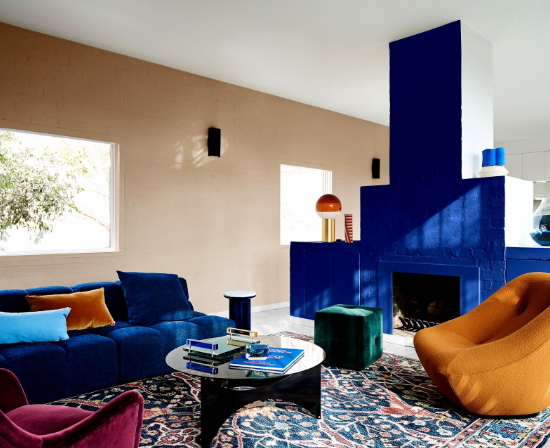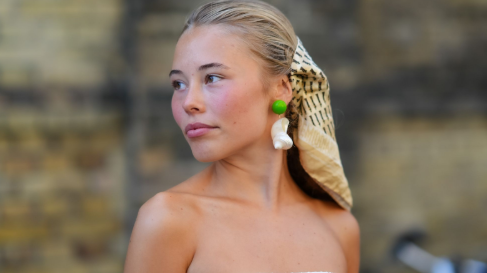Some fashion magazine covers spark trends. Others start movements. But the most iconic ones do both—and more. They become time capsules, cultural touchstones, and visual masterpieces that continue to resonate long after they hit the newsstand. These covers not only changed fashion—they changed how we see fame, identity, and style itself.

Here are the 15 most iconic fashion magazine covers of all time, reimagined through creativity, context, and commentary.
1. Vogue (U.S.), May 1989 – Madonna by Steven Meisel
Few figures have blurred the lines between fashion, fame, and provocation quite like Madonna. In this cover, captured by Steven Meisel, we meet a Madonna who is unapologetically in command: her gaze direct, her styling sleek, her aura almost mythic. More than a pop star, she’s a fashion sovereign, ushering in a new age of celebrity-driven editorial. This cover wasn’t just a nod to Madonna’s star power—it was a formal invitation for pop culture to walk hand-in-hand with high fashion.

2. Harper’s Bazaar, September 1992 – Linda Evangelista by Patrick Demarchelier
This cover redefined the power of restraint. No elaborate backdrops, no excessive styling—just Linda Evangelista in profile, her bone structure carved by shadow and light, her presence magnetic in its simplicity. It was Patrick Demarchelier at his most exacting and elegant, Liz Tilberis at her editorial best. This issue marked the start of Harper’s Bazaar’s reinvention: graphic, sleek, and committed to the idea that fashion should not just dress women, but reflect their power.
3. British Vogue, April 1993 – The Supermodel Towel Cover
Four of the most famous women in the world—Naomi Campbell, Cindy Crawford, Linda Evangelista, and Christy Turlington—pose not in couture but in white towels. The intimacy was revolutionary. At a time when supermodels were seen as untouchable glamazons, this cover brought them down to earth while still keeping their celestial glow. It whispered what most covers shouted: beauty, friendship, and effortless glamour.ish woman who also reads between the lines.

4. Vanity Fair, August 1991 – Demi Moore (Pregnant and Nude) by Annie Leibovitz
It takes courage to be vulnerable in the public eye. But it takes cultural vision to turn that vulnerability into an icon. Annie Leibovitz’s portrait of a nude, pregnant Demi Moore challenged every taboo in fashion and media. It became a rallying cry for maternal beauty, a landmark in visual feminism, and one of the most imitated covers of all time. More than fashion, this was mythology—created with a camera and a bold woman who refused to be edited into comfort.
5. Vogue (U.S.), September 2004 – The Models of the Moment Fold-Out
There are magazine covers, and then there are statements. This fold-out extravaganza featured nine of the most influential faces in fashion—Gisele Bündchen, Daria Werbowy, Natalia Vodianova, and more—each styled to perfection, each heralding a new fashion age. It was Anna Wintour’s subtle reminder: the era of the supermodel wasn’t over; it had simply evolved. It celebrated international beauty, editorial unity, and runway dominance in one masterstroke.
6. Elle France, November 1988 – Black Beauty on the Cover
When Elle France placed a Black model on its cover in 1988—and dedicated the issue to Black beauty—it made history. In an era when diversity in fashion was still painfully rare, this moment was more than editorial. It was political. The model’s stare was calm but commanding, framed by minimal styling that let her radiance take center stage. It remains a cover that feels as urgent today as it did then: a quiet revolution wrapped in glossy paper.
7. Vogue Italia, July 2008 – “The Black Issue” by Steven Meisel
No list would be complete without this cover—a landmark in both fashion and cultural commentary. Steven Meisel photographed Liya Kebede, Sessilee Lopez, Jourdan Dunn, and Naomi Campbell in a series of spreads so rich, so cinematic, that The Black Issue sold out in multiple countries. Its impact was seismic. It wasn’t just about inclusion—it was about showcasing the fullness of Black beauty, narrative, and power on a global stage. This wasn’t diversity as tokenism. This was fashion journalism as activism.

8. Time Magazine, April 1966 – “Swinging London” with Jean Shrimpton
Jean Shrimpton’s appearance on the cover of Time wasn’t just a modeling milestone—it was a cultural coronation. Dubbed the face of “Swinging London,” her fresh-faced, wide-eyed presence symbolized the spirit of the ’60s: youth, rebellion, and reinvention. Her minimalist makeup and relaxed hair broke with tradition, inviting the world into an era where fashion was no longer about rules—it was about revolution.
9. Vogue Paris, October 2007 – Kate Moss and Pete Doherty
It was grungy, romantic, and unmistakably real. Kate Moss and then-boyfriend Pete Doherty appeared on Vogue Paris in a cover that felt less like a fashion shoot and more like a tabloid love letter. Styled with raw sensuality and moody glamour, the image perfectly captured the bohemian chaos of the 2000s. It was fashion flirting with rock and roll—and making it look heartbreakingly beautiful.
10. i-D Magazine, 1980 – The First Wink
It wasn’t polished. It wasn’t perfect. And that was the point. The first cover of i-D, designed by founder Terry Jones, introduced the now-iconic wink and a new visual language: real people, real style, real attitude. Born from punk sensibilities and zine culture, i-D didn’t just report on fashion—it documented the streets that birthed it. That first cover was more than an introduction. It was a manifesto.
11. Vogue (U.S.), April 2014 – Kim Kardashian and Kanye West by Annie Leibovitz
Few covers have divided the industry like this one. Featuring Kim Kardashian in a bridal gown and Kanye West cradling her from behind, it was controversial, daring, and undeniably influential. Critics called it the downfall of Vogue’s exclusivity. Supporters called it a reflection of fashion’s shifting center. Either way, it’s become one of the most memorable—and debated—covers of the decade.rs), it brings authority to beauty journalism.

12. W Magazine, March 2005 – Brad Pitt & Angelina Jolie in “Domestic Bliss”
This editorial wasn’t just a cover—it was a narrative. Photographed by Steven Klein, Brad and Angelina posed as a 1950s couple in a suburban dream gone sideways. It was eerie, seductive, and cinematic. Coming at a time when tabloid speculation about their off-screen romance was at a fever pitch, the cover masterfully blurred reality and fiction, making it one of fashion’s most dramatic meta-moments.
13. Vogue Italia, September 2006 – Sophia Loren at 72
At 72, Sophia Loren’s cover for Vogue Italia was both a statement and a celebration. Draped in dark lace, her expression fierce and unapologetic, Loren’s presence shattered ageist conventions in an industry too often fixated on youth. This wasn’t nostalgia—it was empowerment. Her beauty was not retrospective. It was still evolving.

14. Dazed & Confused, September 2012 – Azealia Banks
Azealia Banks’ cover was loud, vibrant, and experimental—exactly like the artist herself. Posing with neon colors, expressive styling, and a wry smile, Banks embodied the Dazed ethos: irreverent, rebellious, and endlessly cool. It captured the collision of fashion, music, and youth culture in its most raw form, signaling the rise of unfiltered Gen Z expression.
15. Vogue (U.S.), March 2017 – “Modern American Women”
This cover tried to be everything—diverse in size, race, and look—and in doing so, it sparked a necessary conversation. Featuring models like Ashley Graham, Liu Wen, Gigi Hadid, and Adwoa Aboah, the image represented a tentative step forward. Though not perfect in execution, its attempt to reflect real-world diversity marked a cultural shift. It showed that even the most established names in fashion had to evolve—or be left behind.

Final Word: Where Fashion and History Meet
Fashion magazine covers are more than marketing tools—they’re canvases. They reflect who we are, who we admire, and who we want to become. The most iconic covers do not fade; they intensify with time. They challenge norms, immortalize moments, and offer us snapshots of a world still in the process of becoming.
In a digital age, when images vanish in the scroll of a finger, these 15 covers remind us that great fashion is not only worn—it’s witnessed.

















